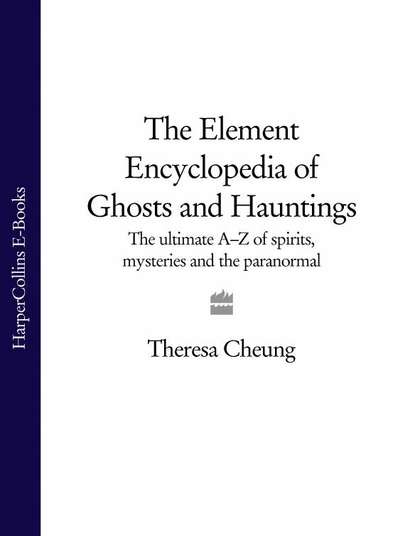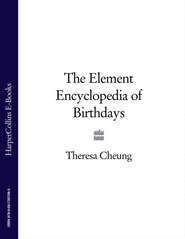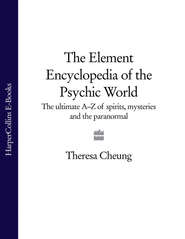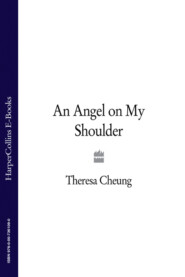По всем вопросам обращайтесь на: info@litportal.ru
(©) 2003-2024.
✖
The Element Encyclopedia of Ghosts and Hauntings: The Complete A–Z for the Entire Magical World
Автор
Год написания книги
2018
Настройки чтения
Размер шрифта
Высота строк
Поля
ANGEL
An immortal supernatural being which mediates between God and humanity. Angels are specific to Judaism, Christianity and Islam, but they occur as helping spirits in other traditions.
The word ‘angel’ comes from the Greek angelos, ‘messenger’, and the name refers to one of the angel’s most important duties, which is to travel back and forth between the celestial and earthly realms, bringing human prayers to heaven and God’s answers to earth. Angels are representatives of God on earth, delivering divine messages or helping humans according to God’s will. Angels exist in a celestial realm but have the ability to assume a physical form and pass as human beings. They may bring fire or bright light; sometimes they are pictured with wings and sometimes without. Where appropriate, they appear to humans in visionary experiences or dreams.
Prior to the Western Enlightenment, angels were believed by many to play a magical role in daily life. However, after the scientific revolution angels were no longer taken seriously except by poets and the romantically inclined. The mystic Emanuel Swedenborg, among other occult figures, claimed to commune with angels. Swedenborg called the souls of the dead ‘angels’ and said he visited them in the afterlife during his trances.
Today angels have made a comeback in popularity, due in part to a widespread spiritual hunger for supernatural assurance and guidance. Some people consider the appearance of a spirit of the dead, such as a family member, to be an angel that comes to warn or comfort them. In deathbed visions the souls of dead friends and family members who come to help the dying person are often believed to be angels. Many people still claim to experience angelic visions, especially those who have gone through near-death experiences, and in many such accounts an angel greets them at the threshold of death. Angels are most often sensed through clairaudience. They sometimes manifest as balls of brilliant white light or appear as real persons in a mysterious encounter with a stranger. These encounters often occur when a person is in crisis and needs decisive action. A mysterious, calm but firm stranger who is knowledgeable about the crisis appears out of nowhere and offers a solution. Once the problem has been solved the person vanishes. It is the abrupt and strange disappearance that makes people wonder whether they have been helped by a human or an angel. Famous examples of reported angel encounters include those of George Washington, who suggested that angels helped him during the Delaware crossing of 1776, and the composer Handel, who believed angels helped him to compose the famous Hallelujah Chorus.
ANIMAL PSI
Animal psi is the ability of animals to experience clairvoyance, precognition, telepathy and psychokinesis.
Are animals clairvoyant, and can they communicate telepathically? Do they possess special powers that enable them to sense danger? Although it is not known conclusively if this is the case, scientific evidence suggests that, if psi exists, it probably does so in both humans and animals.
Sceptics argue that animals thought to possess psi are simply responding to subtle changes in body language and physical cues from their owners, but many animal lovers are certain that psi exists in animals and that psigifted pets are those that are the most loved, as love nourishes psi. Many psychics like to have animals accompany them when they are investigating hauntings because animals are thought to be more sensitive to ghosts and spirits, and many cats and dogs have been known to react visibly in fear in places of suspected paranormal activity.
Evidence for animal psi is largely anecdotal, as animals do not respond well to scientific testing for psi. However, American parapsychologist J B Rhine at Duke University investigated around 500 reported cases of animal psi. Rhine concluded that there were five basic types of animal psi: the ability to sense death or injury to a loved one; the ability to sense the impending return of an owner; the ability to sense impending danger; the ability to find the way home; and the ability to ‘psi trail’ or to find an owner when separated by long distances.
There are also numerous reports of animal hauntings, in particular stories of much-loved pets who have appeared to their owners to offer comfort and love. The stories remain anecdotal, but animals have and always will be associated with the supernatural and paranormal. Strange and mysterious stories of dragons, snakes, cats, dogs, serpents and unicorns linger among superstitions and fairy tales today. Religion, folklore and witchcraft have borrowed heavily from the animal world, for they know that the qualities and energies of animals represent strength, power, devotion, intuition, intelligence and wisdom.
ANIMISM
Animism is rare today, but this very ancient way of perceiving the world may once have been universal. At the root of magic beliefs and practice, animism is the belief that every natural object, both living and non-living, has a spirit or life force and is endowed with reason and intelligence. The animist sees movement in trees, rocks, streams, wind and other objects and believes that everything is inhabited by its own spirit.
Animism is found among many tribal societies throughout the Americas, Asia, Australia and Africa. Having observed that during sleep and dreaming, visions and trances – what today we call out-of-body experiences – the spiritual part of a body could detach from the physical, animists deduced that it could also survive death. Instead of going to the land of the dead, the soul might take control of another person (possession) or send messages to the living through mediums or shamans. It might lodge in various features of the natural world such as trees or rocks, or in human objects such as spears or statues.
Beliefs that a person may have more than a single soul are not unusual. For instance, among many Eskimo groups, a name is one type of soul. In societies that lived close to nature not only people but also animals and plants were thought to have souls, and human spirits might be reborn in animals (reincarnation). In some cases people may have a special affinity with certain species of animal, and the animistic beliefs concerning this human relationship to animals are known as totemism.
For the animist, the world abounds with spirit entities. Water spirits and forest spirits are especially common, but animism is more than just a belief in soul and spirits; it has its own logic and consistency and in many respects can be called a religion.
ANKOU
Ankou is part of the fairy lore of the Celtic countries. He is thought to be the personification of death, who comes to collect the souls of humans when they die. Largely forgotten in Cornwall, Wales and Ireland, Ankou remains a part of the living folklore in Brittany. Every parish in Brittany has its own ankou.
An old Irish proverb says, ‘When Ankou comes, he will not go away empty.’ He is depicted as a tall, dark, haggard figure, wearing a black-robed costume pulled up high about his head and with a large hat that conceals his face. Legend has it that he is always preceded by a gust of wind and you cannot see his face, for if you do it means you have died. He is said to drive a small black coach drawn by four black horses and accompanied by two ghostly figures on foot. Many believe it is not really a coach at all but a hearse and that the job of the ghostly figures is to collect corpses and place them in the hearse.
One legend says that Ankou was once a cruel prince who met up with Death in the forest and challenged him to a contest. The prince loved to hunt and kill, and on this particular night he was chasing a white stag (a magical animal in Celtic stories). The prince set out a challenge before the enormous, black-robed rider: whoever could kill the stag would not only keep the meat but also determine the fate of the loser. The stranger readily agreed, and it is said that his voice was raspy, like leaves scraping castle walls.
They set off at a gallop, and the prince realized immediately that he was bested. No matter how hard he rode, the stranger rode faster. And when the prince was still stringing his bow, the stranger had already set loose his arrow and felled the stag.
As the winded prince approached the stranger said, ‘You can have the stag – and all the dead of the world.’ The stranger sentenced him to an eternity of hunting the souls of all who died around the world.
ANTIETAM
The American Civil War battle of Antietam took place near Sharpsburg, Maryland, on 17 September 1862. Twenty-three thousand men were killed or wounded – the bloodiest single day of battle in American history – and ghosts and strange phenomena still greet visitors to the site today.
George B McClellan, commander of the Federal Army of the Potomac, had not yet been victorious for the Union because of his cautious tactics. Robert E Lee of the Confederate army therefore determined to occupy Northern territory and marched his men into Maryland.
But Lee’s luck was about to run out. A copy of Lee’s field orders had been lost, just about the time Union soldiers spotted a small packet lying on the ground. Opening it, they found three cigars wrapped in paper. The cigars themselves were rare and valuable, but only later did they truly realize what they had: the paper wrapped around the cigars contained Lee’s field orders. McClellan went on the march.
When the two sides came face to face at 5 am on the 17th, both generals were determined to make a stand and change the course of the war. The battle was fierce and frenzied. By late afternoon, thousands had died and, although both sides claimed a victory, in actuality it was a draw. It did change the course of the war, however, for Lee’s failure to successfully invade the North led to Britain postponing its recognition of the Confederate state.
Today the battlefield looks much as it did all those years ago. Some woods have been cleared away and monuments erected, but you can stand on the site and perhaps experience what other visitors have reported – hearing the sound of gunfire and smelling the scent of gunpowder. One visitor to the park saw what he thought was a group of Confederate re-enactors, but realized his mistake when the company suddenly vanished from his sight.
A school field trip became quite an experience for some of the children one spring day. After the guided tour, they were invited to wander the area of the bloody battle for a short time before their departure. Later they reported to their teacher that they had heard what sounded like chanting – like fa-la-la-la-la of ‘Deck the Halls’. The teacher, who was a Civil War buff, knew – but the children could not possibly have – that the war cry of the Irish Sixty-Ninth New York militia, which fought among the Union troops, was Faugh A Ballach, which in English is ‘Clear the Way!’ but in Gaelic is pronounced ‘Fah-ah-bah-lah’.
The nearby Burnside Bridge, named after Major General Ambrose E Burnside, who held the bridge for the Union, also is said to be haunted, as is a local bed-and-breakfast.
APPARITION
The supernatural appearance of a person, animal or object too far away to be seen, felt or heard by normal senses. Contrary to popular belief, most apparitions are of the living not the dead, but apparitions of the dead are also called ghosts.
Only a small number of apparitions are visual; most apparition experiences feature noises, unusual smells, extreme cold or heat and the displacement of objects.
Every civilization throughout history and around the world has held beliefs about apparitions. Among Asian peoples belief in ancestral ghosts is strong, and rituals exist to honour and placate them, as the spirits of the dead are thought to interfere regularly in the affairs of the living and are credited for both good and bad fortune. The ancient Hebrews, Greeks and Romans believed that spirits of the dead could return to haunt the living.
During the Dark Ages people believed in all manner of apparitions: demons, vampires and devil dogs. Around this time the Christian Church taught that ghosts were souls trapped in purgatory until they expiated their sins. The only apparitions that were holy and permitted by God were apparitions of religious figures, such as angels, saints and Jesus. All other apparitions, including spirits of the dead, were delusions created by Satan to confuse the living.
In seventeenth-century Europe apparitions of the dead played an important role as advisors to the living. Belief in ghosts fell out of favour in the eighteenth century, returning in the nineteenth with spiritualism, which espouses survival after death and mediumistic contact with the dead. Many motifs of apparitions appear in the folklore of different cultures, such as the Flying Dutchman or the ankou.
According to a study of apparitions by American psychical researcher Hornell Hart, published in 1956, there is no significant difference between apparitions of the living and of the dead. Apparitions can move through solid matter and appear and disappear abruptly. They can cast shadows. Some are corporeal and lifelike in their movement and speech while others are luminous or limited in movement and speech. Apparitions are typically dressed in clothing of their time. The majority of apparitions are thought to manifest for a reason, for instance, to communicate a crisis or death, give a warning, offer comfort or convey important information. Some haunting apparitions appear in places where emotional traumas have taken place, such as murders or battles, but other hauntings seem to be aimless.
Systematic studies of apparitions began with the Society for Psychical Research, London, in the late nineteenth century. By the 1980s polls in the United States conducted by the University of Chicago’s National Opinion Research Council showed a dramatic increase – around 78 per cent – in reported apparitions, perhaps due in part to changing public attitudes towards acknowledging paranormal experiences.
Although many ghost investigators have their own categories, the following are the most typical types:
Crisis apparitions: usually images that appear in moments of crisis to communicate death or danger. They typically appear to a person who has close emotional ties to the agent (the person who is the source of the apparition).
Apparitions of the dead: manifestations of someone who has died, usually within a short time after death, to comfort a loved one or communicate important information.
Collective apparitions: manifestations of the living or dead that occur to multiple witnesses. Approximately one-third of reported apparitions are witnessed collectively.
Reciprocal apparitions: apparitions of the living in which both agent and the percipient (the person who experiences the apparition), separated by a distance, experience apparitions of each other simultaneously.
Deathbed apparitions: visual images of divine beings, religious figures and dead loved ones that are reported by the dying in the last moments of life.
Apparitions in cases suggestive of reincarnation: cases when the deceased appears in a dream to a member of the family into which it will be reborn. Such dreams occur frequently among Native American tribes of the Northwest and in Turkey, Burma and Thailand.
A large number of theories have been put forward to explain apparitions, but none explain all the different types. Society for Psychical Research founders Edmund Gurney and Frederick Myers at first believed apparitions were mental hallucinations that had no physical reality, either produced by telepathy from the dead to the living or projected out of the percipient’s mind in the form of an image. Gurney also believed that collective apparitions were a product of telepathy among the living, projected by the primary percipient to others around him or her. However, telepathy among the living does not explain why witnesses in collective sightings notice different details.
Myers, who believed strongly in survival after death, began to doubt the telepathic theory as early as 1885. In his landmark book Human Personality and Its Survival after Death (1903), he suggested that the apparitions consisted of a ‘phantasmogenic centre’, a locus of energies that could be perceived by the most psychically sensitive people. He conceived of a ‘subliminal consciousness’ as the basis from which the consciousness springs and which survives the body after death. He theorized that the subliminal consciousness was receptive to extrasensory input and that apparitions appeared to psychically receptive people.
Other theories that have been advanced subsequently about apparitions suggest they are:
Idea patterns or etheric images produced by the subconscious mind of the living.
Astral or etheric bodies of the agents.








![The Dream Dictionary from A to Z [Revised edition]: The Ultimate A–Z to Interpret the Secrets of Your Dreams](/covers_185/48653382.jpg)


